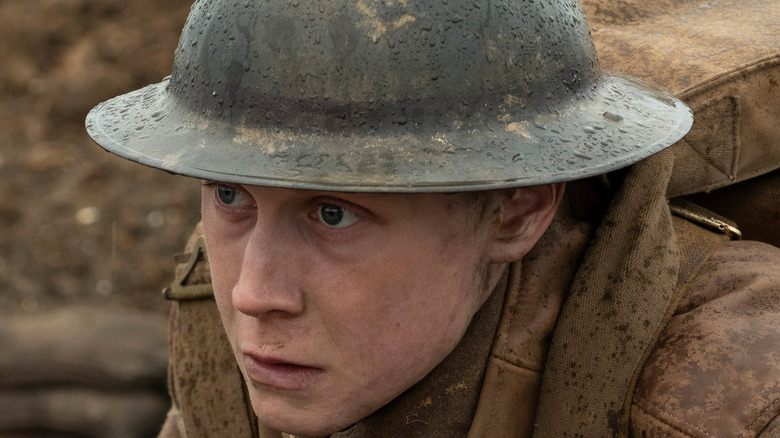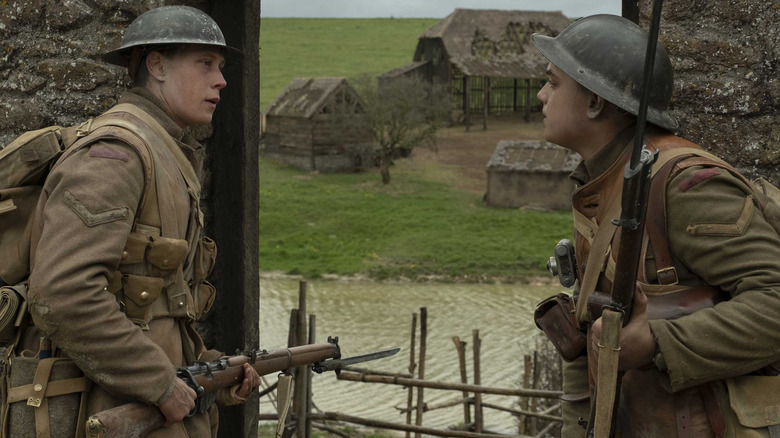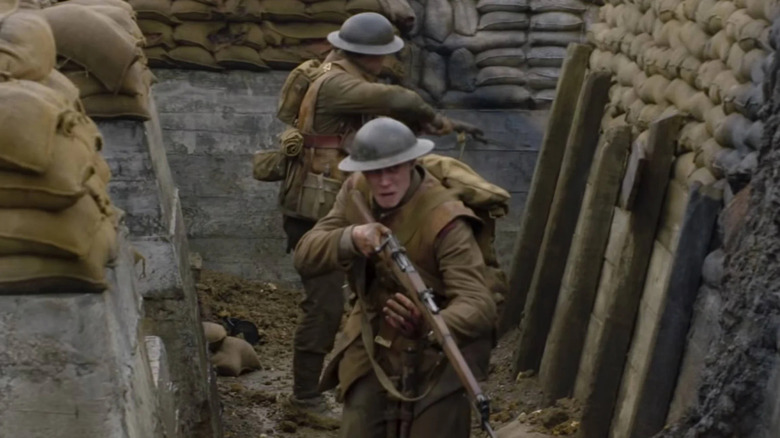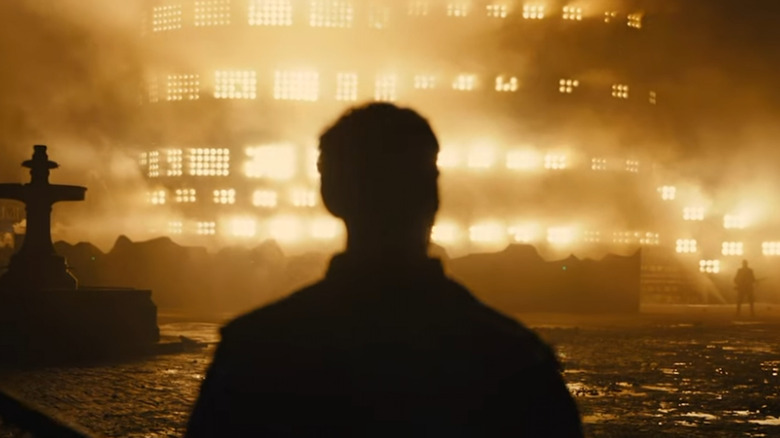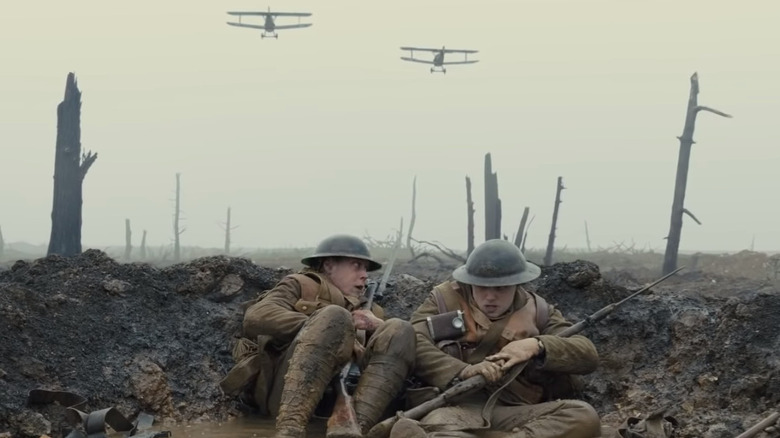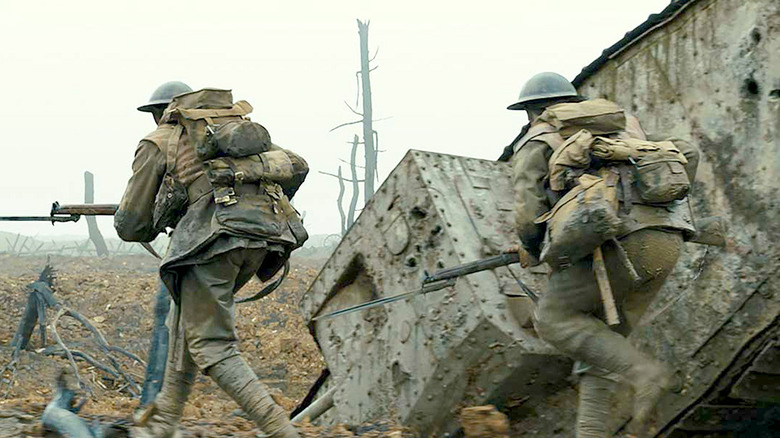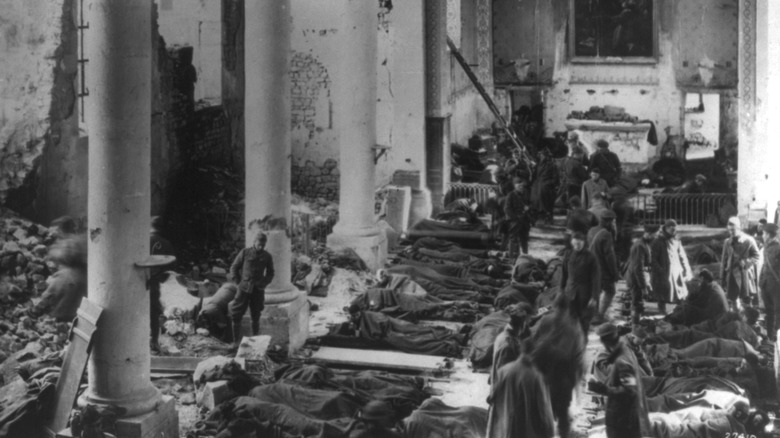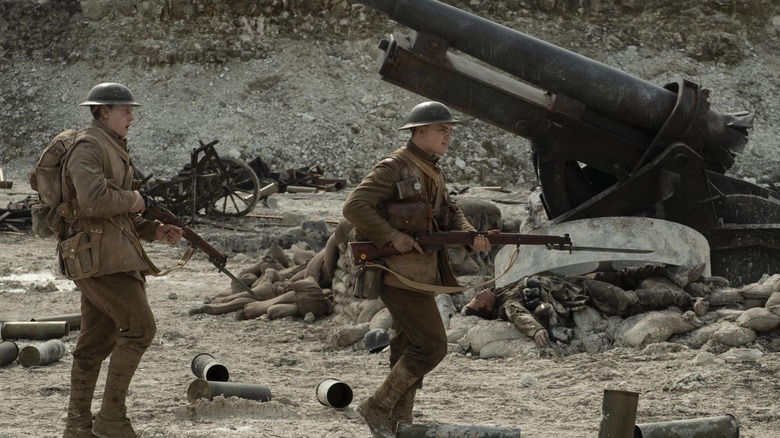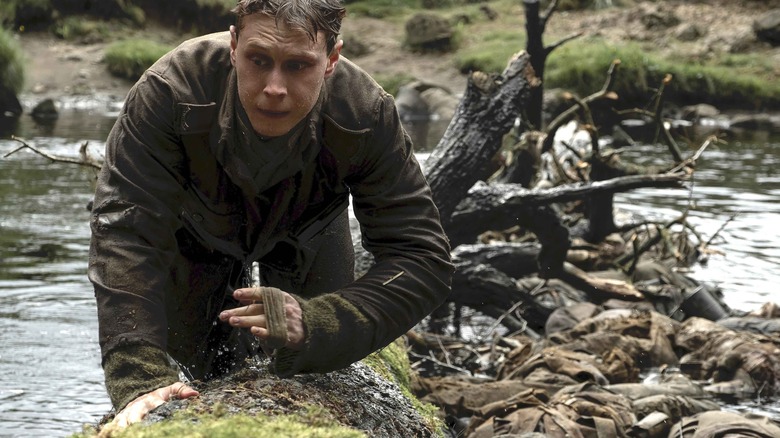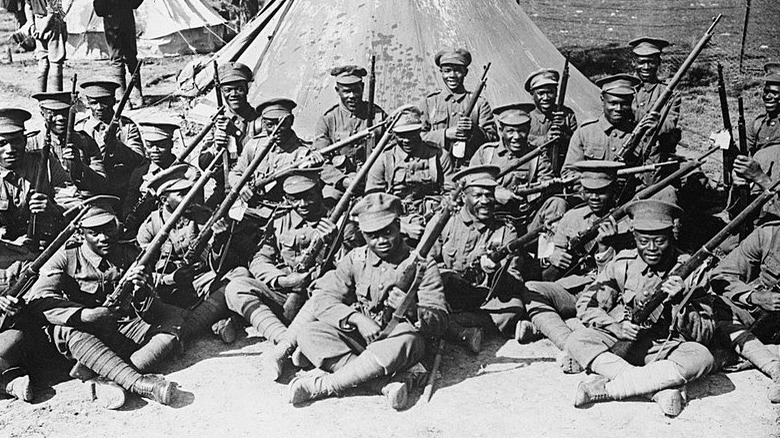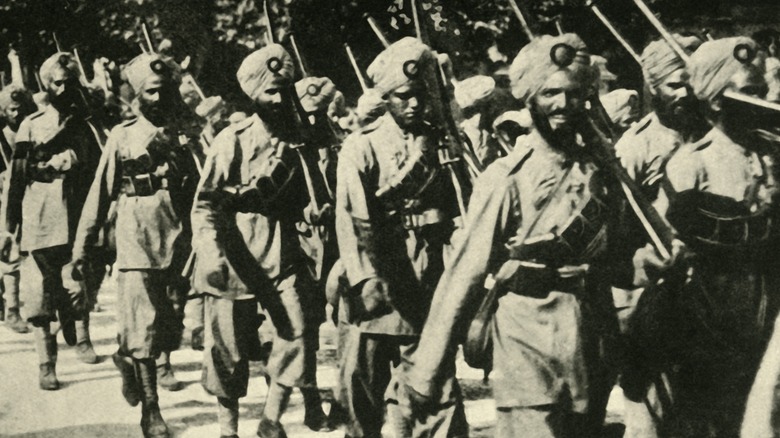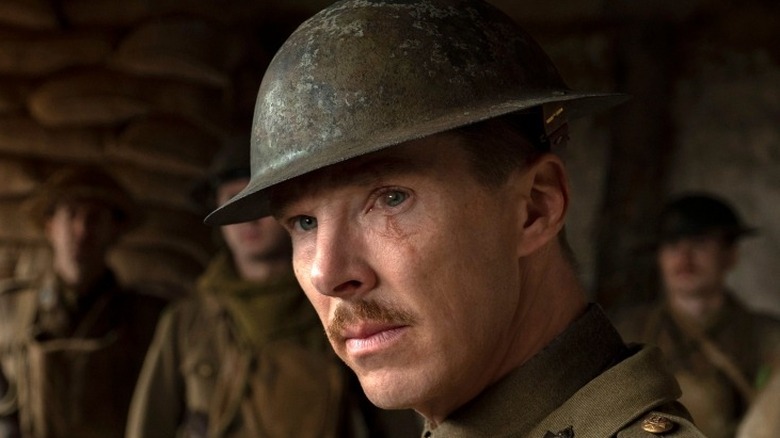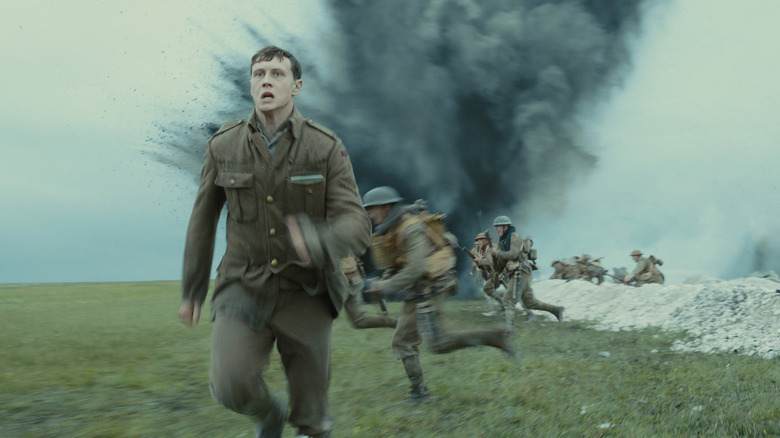Times 1917 Got History All Wrong
World War I was the "war to end all wars" that ravaged Europe, the Middle East, Africa, and the Pacific for four devastating years from 1914 – 1918. Not surprisingly, filmmakers have used this world-changing war as a subject for over a century now, as the Great War has become a way of exploring love, death, and identity. In 2019, talented filmmaker Sam Mendes set out to craft his own cinematic depiction of the First World War, based heavily on historical fact and the real-life conditions of the war, such as the poorly-maintained trenches and the hellish landscape that separated enemy lines.
Shortly after its release, "1917" gained significant attention from moviegoers, historians, and film critics alike, all of whom praised its effective, largely accurate portrayal of World War I. A success at the box office, the movie also took center stage at multiple award ceremonies, earning Academy Award nominations for Best Picture and Best Director (it won for Best Cinematography and several other Oscars for technical achievements). The movie also won Golden Globes for Best Picture (Drama) and Best Director, and ended up winning the most awards at the 73rd British Academy Film Awards (for Best Film, Best Director and Outstanding British film, among others).
Unlike many other big-budget war epics, "1917" hinges on historical incidents that took place during World War I, including the formation of the Hindenburg Line and the destruction of entire villages in the French countryside. However, like most films, the movie does take a handful of liberties when it comes to its presentation of historical events. Here are some of the biggest things that "1917" got wrong in its depiction of World War I.
Two runners would never have crossed No Man's Land
Perhaps the biggest issue most historians have with "1917" is the idea of sending two average soldiers on a lengthy, dangerous journey across no man's land to deliver a message. In the 1910s, the military extensively relied on a network of soldiers — known as "runners" — to deliver messages to nearby troops. However, a number of World War I scholars have argued that the mission of soldiers Schofield (George MacKay) and Blake (Dean-Charles Chapman) would never have taken place due to how dangerous it was (via Time).
By 1917, the Allied and German lines on the Western Front had mostly stabilized, and the areas of land separating the two opposing armies ranged from 15 yards to over a mile. This area — known as "no man's land" — was littered with dead soldiers and animals, barbed wire fences, and impact craters from the constant barrage of artillery. A soldier stepping out of the safety and cover of the trenches would likely have been killed by machine gun fire, artillery, or enemy snipers, just moments after entering no man's land. Under such perilous conditions, World War I experts believe it was unlikely that British Command would entrust two soldiers with such an important mission, given how high the probability of failure was. Most likely, the British army would've sent carrier pigeons to deliver the message instead.
The Hindenburg Line wasn't created to trap the British
The events of "1917" get set into motion when the British military uncover a plan of the Germans to bait their ground forces into an ambush. As detailed by General Erinmore (Colin Firth), the German army has feigned a retreat in the hopes tricking the advancing British army into attacking their new, more heavily fortified position. So, Schofield and Blake must go on a mission to inform Colonel Mackenzie (Benedict Cumberbatch) of the Germans' plan. Although this strategic withdrawal of the Germans was based on historical fact, it wasn't devised as a way to entrap the British army.
From February to March 1917, the German military launched Operation Alberich, in which they withdrew their forces from the front lines to reform them into a shortened version of their previous position. As noted in The Telegraph, these new German lines — known as the Siegfriedstellung a.k.a. the Hindenburg Line — were more easily defendable. They were designed as a way to consolidate the German army into a much smaller area (like the Allies, the Germans had suffered heavy casualties on the Western Front).
The Hindenburg Line allowed the Germans to regroup after their costly 1916 battle at the Somme. According to Smithsonian Magazine, it also helped them restructure their remaining forces for future offensive attacks, such as Operation Michael, which saw the Germans pushing through the British defensive lines as part of their 1918 Spring Offensive.
Conflicting historical timelines
The events of "1917" take place in April of (you guessed it) 1917, a few months before the Third Battle of Ypres. However, much of the movie is heavily rooted in the strategic German withdrawal of Operation Alberich, as well as the scorched-earth policy that the German military carried out from February to March 1917.
As part of Operation Alberich, the Germans marched several miles east from their previous front lines to the newly formed Hindenburg Line. Along the way, they destroyed anything that could have been helpful to the Allies: Electric cables, water pipes, roads, and even entire villages were all subject to total annihilation. The Germans also sent any able-bodied refugees to their occupied territories in France and Belgium (via 1914-1918-online). Everyone else — the elderly, children, and women — was abandoned in these now barely inhabitable places (via The Times).
By taking potential workers for themselves and leaving the "weaker" citizens behind, the Germans took away the possibility of new recruits joining the advancing Allied armies. They also left the Allies with "as many mouths to feed as possible" in the form these displaced refugees, as the German General Erich Ludendorff wrote later on in his memoir. Part of Operation Alberich is impressively depicted in "1917," which shows the German army burning the village of Écoust-Saint-Mein. The only discrepancy is the chronology of these events, as by April 1917, the village would have already been destroyed.
The British were quite cautious about attacking the new German lines
The main plot of "1917" revolves around Schofield and Blake embarking in a race against time to reach Colonel Mackenzie before he unknowingly rushes an attack against the withdrawing German forces. Contrary to Mackenzie's insistence on assaulting the Germans while they're on the run, the actual British response to the Hindenburg Line was far more cautious.
After the Germans had withdrawn from the front line, the British took their time pursuing the enemy, as they had to traverse across 20 miles of dangerous and risk-laden terrain that the Germans had destroyed as part of their scorched-earth retreat (via The Telegraph). As depicted in the film, the enemy had left booby traps everywhere, and British progress in traveling across the land was slow. As they marched towards the new German lines, the British had to build roads and railways to support future attacks and lay the groundwork for the battles that would take place closer to the Hindenburg Line.
By the time an actual offensive was carried out against the Germans at Arras, it was already April and an entire month had passed since the Germans' retreat. While the British were indeed planning an assault on the Hindenburg Line from the get-go, many historians agree that the sudden attack Mackenzie wanted to launch would not have occurred, as most British commanders would have been more hesitant when it came to offensive maneuvers.
The film is loosely based on Sam Mendes' grandfather
Though the main narrative of "1917" is almost entirely fictional, there are elements of historical and personal truth engrained within the film. Schofield and Blake may not have been real individuals who fought in the First World War, but their mission and experiences were heavily based on Sam Mendes's paternal grandfather, Alfred Mendes, a World War I veteran, who served on the Western Front as part of the 1st Battalion Rifle Brigade.
The story of "1917" is specifically rooted in Alfred's experiences in the Battle of Poelcappelle, which he details in his autobiography (via Smithsonian Magazine). In October, 1917, Alfred's commanding officer needed to transmit an urgent message to three other companies in their unit, with which they'd lost contact. Alfred volunteered to do so, and travel across no man's land on what was essentially a suicide mission. Taking two days to locate all three companies and finding himself under constant sniper fire, Alfred delivered his message and returned back to his company "without a scratch" on him. Alfred theorized the snipers were so in awe seeing a single soldier crossing no man's land, they deliberately missed him out of "secret admiration" for his bravery ... or maybe they thought he was "plain crazy."
The Mark II tank wasn't deployed until after the film's events
One of the most haunting scenes in "1917" is Schofield and Blake's journey across no man's land. From the appearance of dead animals and disfigured bodies to tangled thickets of barbed wire, it is a scene that reminds viewers of just how awful and nightmarish the conditions of World War I really were. As well-done as the scene is in illustrating the horrors of the First World War, there are a few mistakes in this depiction of no man's land. The largest of these historical errors is the appearance of a British Mark II tank, which has seemingly been long-abandoned in this desolate landscape.
According to The Tank Museum, Allied forces used British Mark I tanks in late 1916 during the Battle of the Somme. As tank manufacturers developed plans for the more heavily-armored Mark IV (the Mark I's successor in battle), tank drivers were trained using the unarmored Mark II model. Even though these tanks weren't armored because they were built specifically for instructional purposes, the increasingly desperate situation on the Western Front resulted in the less protected Mark II being used in combat. In fact, 26 Mark II tanks were deployed at the Battle of Arras on April 9, 1917, three days after the events of "1917." Because of their lack of armor though, they offered little resistance from rifle fire or anti-tank artillery, and were quickly phased out by the more effective Mark IV by the summer of 1917.
The transport of wounded troops was lengthier in real life
Near the very end of the film when Schofield meets with Lieutenant Blake, wounded British soldiers are seen being treated in a medical field tent close to a nearby battlefield. In the course of World War I, however, aid stations used to treat the wounded were far more complex and often involved lengthier travel time than what's depicted in "1917."
When a British soldier was hurt in battle, treatment began as soon as possible. Soldiers typically carried medical supplies with them, so they could take care of wounded comrades until more advanced medical attention could be given (via DKFindout!). This would help tide the injured men over until orderlies or stretcher-bearers arrived. According to The History Press, the downed soldiers were then taken to a Regimental Aid Post operated by the Royal Army Medical Corps, which was situated behind the front line. A soldier was treated here, and if he wasn't seriously injured, he was sent back to his duties.
If the wound was more severe, the soldier was transported farther away to the Advanced Dressing Station, positioned about 400 yards behind the Regimental Aid Post. These makeshift battlefield medical centers all had to be as protected as possible, so they were situated in abandoned buildings, underground bunkers, or even impact craters to shield both the wounded and medics from enemy fire.
If the soldier had an injury that would put him out of action for a significantly longer period of time, he was transported to either a Casualty Clearing Station, hospital, hospital barge, or ambulance train to receive additional care. That being said, it's very unlikely the British would have tended to their wounded in a wide-open field as they did in "1917," especially considering how close they were to their front lines and how vulnerable they were to enemy artillery fire.
German artillery pieces wouldn't have been so close to trenches
Shortly after passing through no man's land, Schofield and Blake enter the abandoned German trenches and are nearly blown up by a booby trap set in the underground barracks. They manage to escape and continue wandering through the German lines, eventually passing a large artillery piece, which is seen in the background. The artillery piece is historically accurate, but its position so close to the front lines is not.
World War I artillery pieces were divided into two categories: lighter artillery that could be pulled by a team of horses and heavier guns that required a tractor to transport (via DKFindout!). In almost all circumstances, these heavier guns were placed miles behind the front lines, rather than being stationed within the main trenches, as is shown in the film (via Acoustics Today). Not only would their close placement put them at increased risk of being destroyed by British artillery, but also heavier guns had a longer range than lighter artillery. This meant that there was a higher probability that the shots they fired at close-range would pass directly over the British trenches and miss them completely.
The river that Schofield crosses is much calmer in real life
Halfway through the movie, Schofield enters the ruined town of Écoust-Saint-Mein, a small village that has been almost completely destroyed by the retreating German army. As he nears the city, he crosses a river, later escaping from pursuing German forces by jumping into that same river, where he gets swept downstream. Passing through rapids and even dropping over a waterfall, Schofield nearly drowns before making his way to shore. As tense as the scene is, the actual river that Schofield narrowly escapes from is far tamer than its dramatic appearance in "1917."
In actuality, the river that Schofield swims across is La Sensée, which cuts through Northern France and is little more than a narrow stream. "1917" takes place near Amiens, the capital city of Somme, a region known for its calm rivers (via Explore France). Due to how flat the entire Somme region is — and in particular, how little elevation there is across the Arras plain — rivers in northern France are unable to pick up significant speed, nor is there any dramatic change in elevation that would allow for waterfalls or rapids in the area. In fact, the river scenes in the film were shot at the Tees Barrage International White Water Centre in northeastern England, an artificial white water course the film crew used for safety purposes.
The presence of the British West Indies Regiment on the Western Front
One of the more interesting aspects in "1917" is its inclusion of several non-white British soldiers. Notably, there's the appearance of a Sikh infantryman and several Black soldiers, who all appear as extras. According to Sam Mendes, this was a conscious decision to acknowledge that World War I "wasn't just a war fought by white men," as the director told Time Out London. Mendes cited the fact that Sikh regiments from India and Black troops from the West Indies aided the British in the Western Front. Mendes' choice to depict these soldiers is commendable, as it sheds some much-needed light on the unsung, non-white heroes of World War I. However, there are some slight inaccuracies regarding their appearance in the film.
Just as there were organized Sikh regiments from India serving in World War I (via The Guardian), there were also Black soldiers who assisted the British Empire in the fight against the Central Powers. According to The History Press, most of these Black soldiers volunteered or were conscripted into colonial regiments, and hailed predominately from Africa and the West Indies. In 1915, the British West Indies Regiment (BWIR) was formed, and by the end of the war, about 15,000 Black soldiers from the Caribbean had served in the BWIR.
As is shown in the film, the BWIR were indeed active on the Western Front. However, due to the systemic racism of the time, the unit was relegated to tasks like digging trenches, carrying stretchers, and building roads, as they were not allowed to participate in the fighting (via Black History Month Magazine). However, with all the manual and infrastructure upkeep the BWIR was responsible for, their contribution was critical when it came to assisting the British army in Europe and the Middle East. Despite the historical inaccuracy of showing this regiment fighting, we're still thankful for Mendes' decision to include such under-appreciated soldiers in his film.
Sikh soldiers did not fight on the Western Front in 1917
While Schofield is on his own in the second half of "1917," he encounters a passing British unit heading to the new front lines. At the end of the scene, you can briefly spot a Sikh infantryman sitting in the "casual truck." "Casuals" in the British Army has historically referred to those in non-fighting roles, like grooms or cooks (versus the American definition, which refers to soldiers who were separated from their units and were being sent to the front lines to rejoin them). While Sikh soldiers did play a major role in British operations during the early years of World War I, the soldier's appearance in the film goes against historical chronology.
At the onset of the war, the British had a relatively small standing army, and relied extensively on volunteers from across the British Empire, including 140,000 Indian Sikhs, who enlisted (via The National Army Museum). As noted by BBC, these Sikh regiments saw some of the fiercest fighting of the war, participating in such battles as the Somme, Neuve Chapelle, and the Second Battle of Ypres. By the end of 1915, the regiments had suffered from heavy casualties and significantly low morale from the intense fighting and harsh European winters. This resulted in almost all Sikh forces being recalled from the Western Front and deployed to the Middle East, save for a few cavalry units. Since all infantry units had been transferred from Europe by 1917, the single Sikh infantryman's appearance in the movie would have been impossible given the film's historical setting of April 1917.
British military protocol
As with most military forces, the British Army has distinct rules and protocols that dictate proper etiquette when it comes to how enlisted soldiers should interact with their superior officers (standing at attention until told otherwise, saluting superiors, and so on). "1917" portrays many of these protocols accurately, although the movie does fall victim to a few of the trickier rules regarding proper military etiquette within the British Army.
For example, during Schofield and Blake's meeting with General Erinmore, the two lance corporals are shown wearing their helmets inside a trench bunker. British military rules indicate that soldiers should remove their helmets when indoors and in the presence of a superior officer. Later in the film, Schofield salutes Colonel Mackenzie when trying to halt the British attack on the German lines. According to British military protocol, Schofield would be unable to salute Mackenzie, as he lacks a helmet or headgear that indicates his regiment, which is required in order to salute (via Forces News). Admittedly, these are very small inaccuracies that point more to the complex rules of proper etiquette when it comes to military protocols more than it does to any major shortcomings in the film.
Standing so close to artillery explosions without any problem
Several times throughout "1917," characters are shown dodging massive artillery explosions, most notably in the final battle scene. Historically, World War I relied heavily on artillery pieces, which were responsible for weakening defensive lines by barraging enemy trenches for agonizingly long periods of time. However, the soldiers' reactions to the explosions in "1917" are comparatively mild when you take into consideration how deafening World War I explosive shells really were.
The average noise level of a World War I explosion ranged as high as 185 dB — loud enough to be heard up to 200 miles away (via HHTM). The sound of a single explosive round landing nearby would be enough to literally shatter a man's eardrum, never mind what might happen if you had to endure a continuous barrage of explosions. One study published by the Journal of Laryngology & Otology even estimated that roughly 2.4% of British soldiers were disabled from hearing loss due to the war. However, British doctors at the time believed this deafness was temporary or the product of "hysterics," used as a way for soldiers to get out of active duty. Regardless, the fact that Schofield manages to pass by exploding rounds with barely any reaction is a distinct unlikelihood, as is Blake and Schofield withstanding the underground trip wire explosion without any hearing damage whatsoever.
